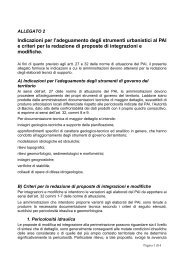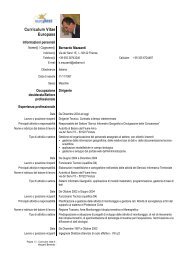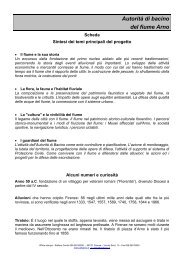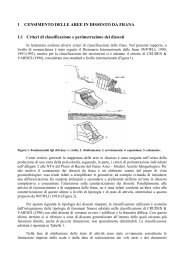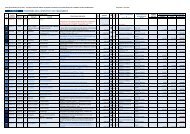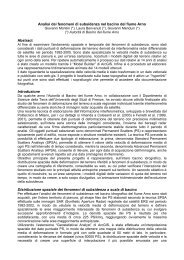11. Confidence Intervals for Flood Return Level Estimates assuming ...
11. Confidence Intervals for Flood Return Level Estimates assuming ...
11. Confidence Intervals for Flood Return Level Estimates assuming ...
Create successful ePaper yourself
Turn your PDF publications into a flip-book with our unique Google optimized e-Paper software.
218 11 <strong>Flood</strong> <strong>Level</strong> <strong>Confidence</strong> <strong>Intervals</strong>ACF−0.2 0.2 0.6 1.0VilsbiburgSimulatedACF0.0 0.4 0.80 5 10 15 20Lag[years]length=620 10 20 30 40Lag[years]length=6200Fig. <strong>11.</strong>2. Autocorrelation of the empirical maxima series and a section of same length cut outof the simulated series (left). The right panel shows the Acf of the full simulated maxima series(length=6200). The 95% significance levels are marked as dashed lines.series X t with an exponential function. The resulting record Z t = exp(X t ) isthen log-normally distributed.Considering Z t as 100 years of daily run-off (N = 36 500), we per<strong>for</strong>m anextreme value analysis, i.e. we model the annual maxima series by means ofa Gev. Since the marginal distribution is by construction log-normal, we restrictthe extreme value analysis to a Gumbel distribution which is the properlimiting distribution in this case. Exemplarily, a 100-year return level is estimatedusing the Mle (cf. Sect. <strong>11.</strong>2.2). Repeating this <strong>for</strong> 10 000 realizationsof Z t yields a frequency distribution representing the variability of the returnlevel estimator <strong>for</strong> the Far[1, d] process, shown as histogram in Fig. <strong>11.</strong>3 (leftpanel). An analogous simulation experiment has been carried out <strong>for</strong> an uncorrelatedseries with a log-normal distribution (Fig. <strong>11.</strong>3, right panel). Bothhistograms (grey) are compared with the limiting distribution (solid line) ofthe Mle (Eq. (<strong>11.</strong>19)) evaluated <strong>for</strong> an ensemble member with return levelestimate close to the ensemble mean. For the uncorrelated series the limitingdistribution provides a reasonable approximation in the sense that it roughlyrecovers the variability of the estimator. In the presence of correlation, the estimatorsvariability is underestimated. This indicates that confidence intervalsderived from the Mle’s limiting distribution are not appropriate here.Alternatively, confidence intervals can be obtained using the profile likelihoodwhich is frequently more accurate [<strong>11.</strong>12]. Table <strong>11.</strong>1 compares the upperlimits of two-sided confidence intervals <strong>for</strong> three α-levels obtained using profilelikelihood to the limiting distribution and the Monte Carlo simulation. Thelimits from the profile likelihood are indeed <strong>for</strong> the correlated and the uncorrelatedprocess closer to the limits of the Monte Carlo ensemble. For the



